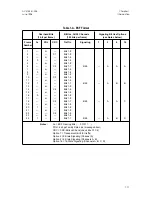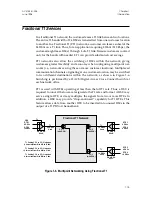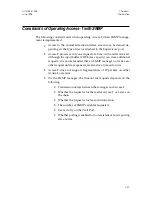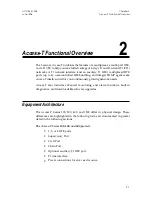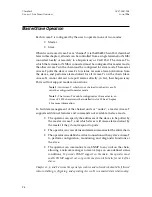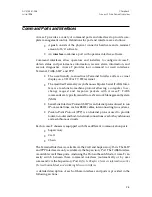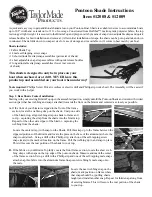
In the Figure 1-8, an SNMP message (i.e., a GET or SET request) from the SNMP
manager to the Access-T device, is passed down through the protocol stack,
across the link layer and up through the protocol stack at the Access-T. On the
message’s way down through the protocol stack, each layer adds information
to the message by prepending headers (and sometimes trailers). On the mes-
sage’s way up through the protocol stack, each layer extracts information
relevant to its layer from the headers (and sometimes trailers). In this way, each
protocol layer effectively communicates with its peer on the same layer, which
is indicated in Figure 1-8 by the dotted lines.
In general, TCP/IP layers provide the following functions:
•
Application Layer
handles the details of different TCP/IP applica-
tions, such as SNMP. Other TCP/IP applications include Telnet, File
Transfer Protocol (FTP), or Simple Mail Transfer Protocol (SMTP).
•
Transport Layer
provides a flow of data between two hosts, for the
application layer above. SNMP uses UDP, a simple non-reliable
service, as a transport layer protocol. Other TCP/IP applications use
Transmission Control Protocol (TCP) as the transport layer.
•
Network Layer
handles the movement of packets around a network.
•
Link Layer
handles the physical interface to a transmission system.
Access-T uses SLIP or PPP over an RS232 interface, but there are other
possible link layers. Ethernet is a widely used link layer.
This is only a simplified example of the TCP/IP layers; the complete TCP/IP
protocol suite contains more than one protocol at each layer. The transport layer,
for instance, also contains the Transmission Control Protocol (TCP), which is
not used by the SNMP application.
ACST-0351-005
Chapter 1
June 1996
Introduction
1-21





